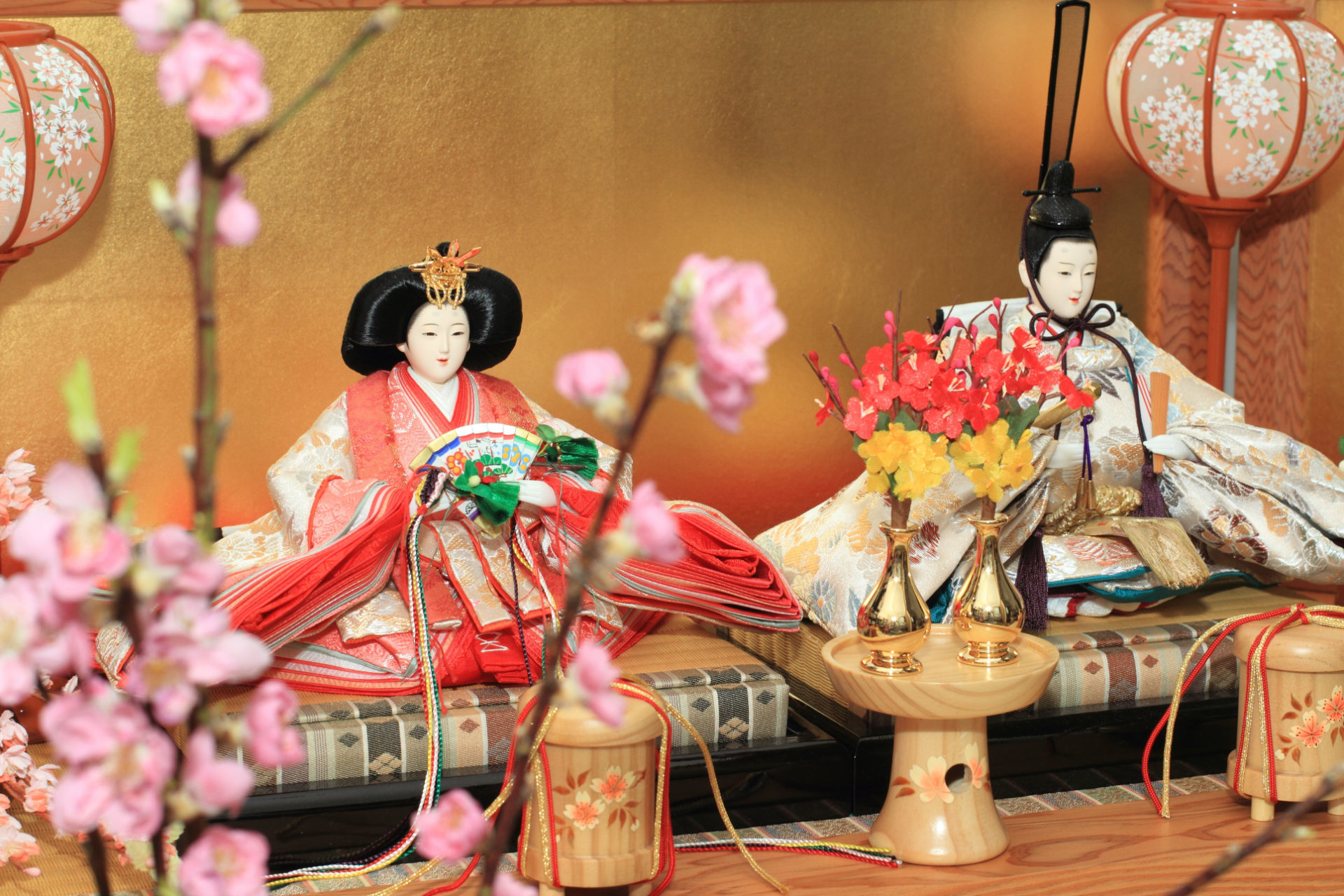Come March, Japanese families and business will display beautiful, often handcrafted dolls depicting an imperial court scene. What’s behind this tradition?
Hina Matsuri, also often called Girl’s Day or Doll’s Day is celebrated on March 3rd and is one of the five seasonal festivals which are celebrated on auspicious days of the Chinese Calendar. It takes its name from the Hina-dolls (雛人形 Hinaningyo). These often handmade dolls are dressed in the fashion of the Heian period imperial court, displayed on a platform covered with red carpet. The dolls are usually handed down in the family and therefore, old and precious (read expensive). The central figurines are a sitting male and female doll (男雛 obina and 女雛 mebina respectively). They are symbolic for the royal bride and groom at a Heinan Period wedding. Parents will often gift their daughters the first pair before her first Hina Matsuri and then over the years accumulate the remaining dolls – up to seven tiers are possible. In a way, it is similar to having a nativity scene at home during Christmas in western cultures. Traditionally the dolls were displayed only on the day and only until the daughter’s 10th birthday. But in modern times many families leave them out for the whole month, and many offices and shops also put up their Hina Matsuri displays. Modern interpretations sometimes see the dolls replaced by other objects, like cat figurines or even ice cream. The festival is also strongly associated with Peaches and Peach blossoms as it used to coincide with it’s blooming before global warming.
While there is some variation based on the family’s tradition, the level and order of dolls are mostly set:
The centre stage and top platform are for the couple; they are often seated against a golden screen and have two paper lampstands next to them. For a complete set, place two vases with peach branches between them. The figures only represent positions, not individuals, but are dressed in full court attire and regalia.
The second platform has the attendants of the royal couple. Three court ladies with serving utensils and a serving table will be standing or kneeling. To make the platform complete, little round tabletops with seasonal sweets are placed between the figures.
The third platform holds the band, so to say, five male musicians. Four men play instruments and the fifth, the singer, is holding a fan and standing. The instruments typically are a small drum, a large drum, a hand drum and a flute. Can’t have a royal wedding without song and dance.
On the fourth platform will be the Minister of the Left (usually an older doll) and the Minister of the Right typically a younger doll). They kneel according to their names on the left and right sides of the display. Between them will be covered tables and stands and diamond-shaped Mochi. Often there will be an Orange Tree and a Cherry Tree (Sakura) in the corners of the display.
The 5th Tier holds the helpers of the Emperor and the Empress, but for some reason, they are depicted as a trio of drinkers – the angry one, the laughing one and the crying one. On the sixth and seventh tiers, a variety of miniature furniture, tools, carriages, etc., are displayed.
Having more than five platforms is not very common, but if the family did invest, then the 6th family will have various chests, drawers and similar items of furniture. The 7th platform will have palanquins, drawn carts, lacquered food boxes and other necessities for a royal picnic.
The dolls are always very intricate, their gowns and accessories full of detail. An impressive display can be found on the 100 steps of the Hotel Gajoen Tokyo. It truly is a sight to behold.
Being dolls, they used to be toys for girls, but I don’t know anyone still playing with them in modern times. As my Japanese friends report, the dolls are often very stuffy, from being locked away for most of the year in chests. Being handed down, they are often fragile and should be kept very far away from the hands of children.
Typical Hina Matsuri foods and drinks are 甘酒 Amazake (a sweet, non-alcoholic Sake), ちらし寿司 Chirashizushi (Assorted Sushi and vegetables on rice) and 桜餅Sakuramochi (Mochi wrapped in marinated Sakura leaves).
In summary – a very delicate and elegant festival, to celebrate the starting of spring, youth and fun activities. Side note: boys need to wait a bit longer for their day – until May.





I am so grateful for your post. Really thank you! Much obliged. Adey Fred Milan
I really liked your blog. Really looking forward to read more. Keep writing. Shanon Stanleigh Mullane